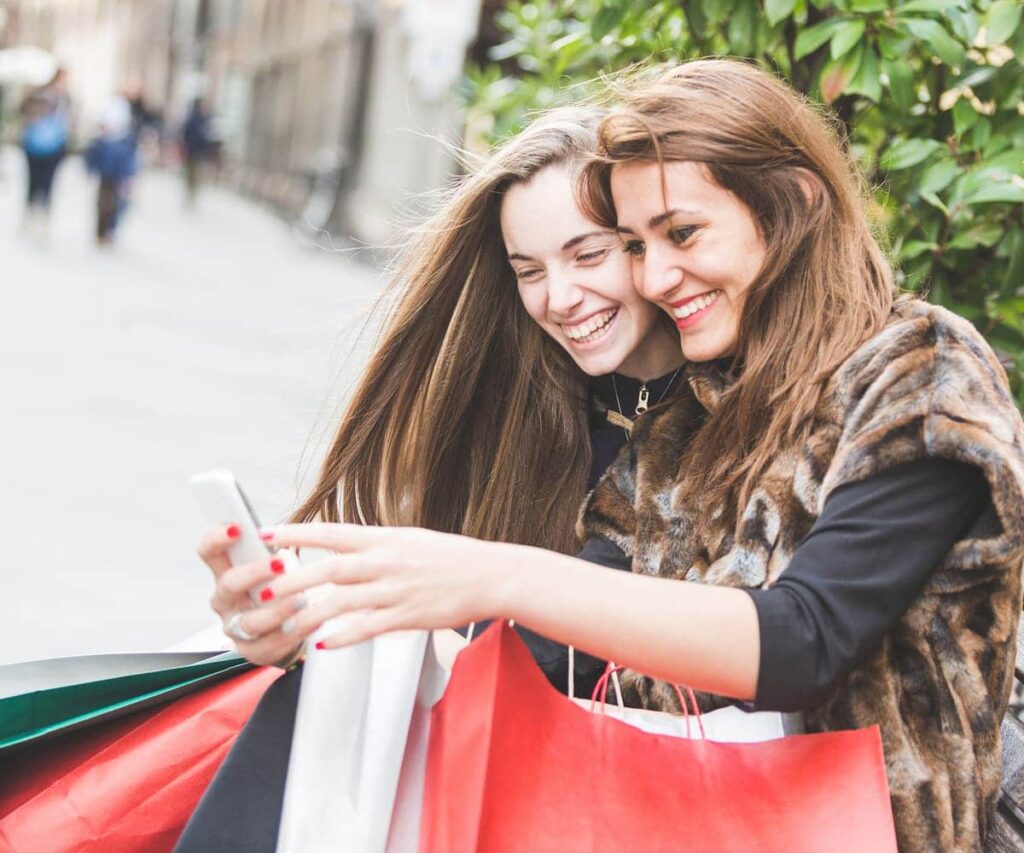The coronavirus pandemic was a huge disruptor for customer loyalty programs in 2020. Whether due to restrictions, economic hardships, social distancing, or discomfort with public settings, shopping patterns and behaviors have shifted and will continue to shift well into the next year. While many are excited for a fresh start in 2021, America’s health experts are still unsure of when our country could see some normalcy again—predictions now forecast the end of 2021’s third quarter. This means that brands will need to remain vigilant into 2021 and approach their customer loyalty marketing with careful thought and strategy.
Here’s what we know about customer habits in 2020:
- Shoppers are trying new brands. A McKinsey report found that 75% of consumers have tried new brands and retailers. Top reasons for defection include lack of product availability, as well as better prices and promotions. Brick-and-mortar retailers and brands should adopt the latest technology and strive for better synchronicity across all channels, from brick-and-mortar stores to web to wholesale.
- Shoppers value convenience. While lack of availability was the most common disruptor, other harmful issues affecting loyalty, according to another study, are difficult returns processes and clunky apps or websites that are not user-friendly. Loyalty best practices include optimizing the customer experience with: free and simple returns policies, click-and-collect, priority pickups, multiple modes of communication, app personalization, and an above-and-beyond digital experience. Making a meaningful effort to show you care about consumers’ common pain points and are working hard to resolve them is a key pillar to creating an emotional connection that translates to deep-rooted, long-lasting loyalty.
How the Ultimate Guide to Customer Loyalty Marketing Will Look in 2021
If 2020 taught us anything, it’s that the customer experience does not always go perfectly. But mobilizing an efficient response can significantly increase brand affinity and smooth over any bumps that may have arisen. This ultimate guide to customer loyalty marketing looks at best practices to take away from 2020 and trends to look out for in 2021, including communication strategies, location-based marketing, click-and-collect, premium perks, and strategic partnerships that add value.
Timely, Relevant Communication
Fifty-eight percent of customers will remain loyal to a company that keeps them informed with timely, relevant information. Reaching out is important, but the expectation is that your marketing will be targeted to a specific individual’s past browsing and purchasing history, wishlist, demographics, location, and stated preferences.
Keeping the messaging pertinent to consumers’ present time lets consumers know that you are paying attention, listening, watching, and are invested in their happiness.
Apps have become an essential communication and data collection tool for loyalty programs, since nearly all consumers are using mobile devices on their shopping runs. Going one step further, beacon technology allows brands to connect with shoppers on-the-go in the most timely, personalized manner possible.
When a shopper passes a certain aisle, walks past a competitor’s store, or spends a certain amount of time in a particular part of the store, brands can send specific messages relevant to that activity, capturing shoppers at the most opportunistic time for conversion.
There are many ways to effectively engage with customers:
- Send a series of onboarding welcome messages to educate and assist new customers with loyalty program features.
- Test different promotional messages to see which drive more sustained engagement and transactional behavior.
- Automate texts based on consumer behaviors, like signing up for an event, passing a store, or creating a wishlist.
- Personalize offers based on past purchase history, offering greater rewards for frequent buyers and VIPs.
While email, social media, and in-store promotions have their place, focusing on mobile is more timely than ever, since 60% of U.S. loyalty program members between the ages of 18-34 use a mobile app to manage and redeem rewards.
Customer-First Focus
Earning loyalty involves a simple strategy: Put the customer first. Loyalty is an emotional state more than a rational choice. When you provide significant value and express your dedication to the customer’s best interests, the reciprocal enthusiastic devotion will follow.
Loyalty doesn’t derive from discounts, but from feeling attended to, cared for, and significant. If shoppers feel like the business doesn’t care about them, especially in this day and age where competition is abundant, they’ll take their valuable dollars elsewhere.
Expectations are ever-rising as thoughtful innovators raise the bar of customer service. As a result, companies are increasingly implementing new conveniences that attract and maintain their customer base.
Local-First Marketing
Consumers are largely dispersed due to COVID-19. Some urban workers are now spending the majority of their time in the suburbs, working from home; others who have lost their jobs are shifting into new roles and neighborhoods.
Proximity marketing tools like beacons and GPS-based apps give brands the ability to target smaller communities on a hyper-local level, rather than sending out sweeping marketing messages across mass markets.
Personalized mobile marketing on a local level involves:
- Greeting shoppers upon entering a store to stay top-of-mind.
- Guiding consumers to products.
- Sending helpful, timely information.
- Providing motivating local deals.
Given that 89% of companies who implemented location-based marketing saw an increase in sales and 84% saw higher engagement rates, it’s no surprise that this successful tactic is used to cultivate long-term loyalty.
Click-and-Collect Convenience
Buy Online Pickup In-Store (BOPIS), otherwise known as Click-and-Collect, had a big year in 2020, with nearly 70% of consumers taking advantage of this convenient new service.
Even as widespread fears of virus contamination peaked, shoppers proved their commitment to brick-and-mortar. They may have consolidated more shopping into fewer trips, but only 1 in 4 shoppers replaced the traditional shopping experience with eCommerce.
Modern shoppers operate in an omnichannel environment, where they interact with brands through various channels throughout a single shopping experience. BOPIS removes shipping wait times for shoppers who want their goods right away, alleviates wait-in-line bottlenecks with advance payment, and provides the sort of personal attention that drives loyalty.
Premium Perks
Traditionally, brands thought the most valuable incentive they had was a price-based offer. However, research indicates that 87% of loyalty members who are satisfied with the program’s special perks and benefits will remain faithful to the brand even if competitors are offering lower prices. Trust, convenience, and comfort can go a long way.
So what do “premium perks” look like in 2021? Free shipping is the most desirable perk cited by premium loyalty members.
Other premium perks include:
- VIP privileges like “first to know” about new product launches, sales, and events.
- Special savings or double-point days for the most dedicated loyalty club members
- Status perks like premium parking spots, skip-the-line benefits, and exclusive event invitations.
- Social media shoutouts
- Complimentary upgrades
- One-to-one customer support
- Flexible returns
- Birthday gifts
Strategic Partnerships
How can your brand offer greater value in 2021? The answer could be found in a strategic partnership. Brands have always joined forces with other equally successful companies to better serve their existing customers and reach out to new audiences.
For instance, a leading winery partnered with Shopkick, a mobile reward shopping app, to drive awareness, consideration, and trial of their products through an inventive “Spring Entertaining” campaign. Shopkick first leveraged engaging lookbook content, branded in-app videos, and promo units that emphasized the products’ ability to pair well with recipes, inspiring users with ways to use the products.
Once consumers were in-store, Shopkick incentivized them to engage with and purchase the winery’s products through “kicks” (reward points) that can be redeemed for a gift card of their choosing once enough are accumulated. To drive incremental purchases, Shopkick awarded more kicks to shoppers who made unplanned purchases of the winery’s products.
The results were significant—there was an 83% lift in awareness; 78% of shoppers never heard of the products before; and 49% of purchases were incremental.
In 2021, Compassion and Convenience Will Go a Long Way
Now more than ever, companies need to focus on extending compassion and convenience. While offering great deals and enticing promotions cultivate goodwill with customers, they are not effective long-term strategies for increasing loyalty. Brands that consider alternate methods of rewarding their loyal shoppers with free sample surprises, reward points, gift cards, contests, and differentiating VIP services will find that brand affinity and long-term loyalty come naturally.
Thank you for reading this ultimate guide to customer loyalty marketing in 2021. Shopkick is a mobile rewards shopping app that helps cultivate long-term customer loyalty. Brand and retail partners use Shopkick to drive repeat sales and solicit market share—all while ensuring a significant ROI. Contact us to learn how you can drive greater loyalty in 2021.





